
Big Trout with Small Fly --Vol.4--
Strategy
The first day of Mary Anne and me in the River Em was over on September 2, 1996 in Sweden. I hooked two fish but could not land either of them. My failure partly came from bad luck but I did not want to have the same terrible experience. Well, I'm going to devise a new fighting method. I'm going to try size 4 fly with stronger hook. It is not wise to use a large fly in such extreme low water. But a small fly is not good either, because I can not fight with all my might after hooking while I am worried that the hook is not strong enough or that it will come off after tearing the inside of fish mouth.
Pike Pool was very calm like a lake. How can I make the light fly sink and drift well?
Mr. Ulfsparre, the owner of the River Em, provided us good information. He said that it was only today that bad fishing condition of this week allowed anglers to catch or hook fish. Since I hooked two fish, I thought that my method was not so wrong.
I examined today's fishing; it was very hot and we had extreme low water, so the water temperature was over 20 degs C. There were a lot of fish. But almost no angler caught one of them. Well, that means fish have poor appetite even at night. If there is no chance to catch fish even at night, then I will fish during the day so that Mary Anne can take films.

The left bank of Home Pool. When I am standing here, fish jump in front of me.
I think that it is common practice under such condition of low water that anglers drift a small fly on the upper layer of the water. Actually some anglers were fishing in that way, but most made the fly sink into deep water and drew fish's attention by retrieving the line little by little quickly. That seemed to be the ordinary way of this river. But the trouble was that in order to make the fly sink deeply anglers used the fast sinking line, which inevitably caused snagging at the bottom. I constantly saw an angler or another pulling the line somewhere in the river.
Surely fish only stay in deep water under such condition. But due to scarce water, the river is flowing gently in its deep part. It is very difficult to drift the fly on slow current. So we need to retrieve the line to drift the fly. If we retrieve the line quickly, inactive fish will never bite it. On the contrary, if we retrieve slowly, the line will sink so fast that the fly will snag at the bottom. The only solution is to use the line that does not cause snag at the bottom even if we retrieve it slowly. But another problem is that it takes ages to make the slow sinking line sink deeply. If we spend much time, the fly will pass the very point or the line will sink and form a loop downstream, which means the fly will drift through the bad course.

Old Man's Place spreads along the right bank of Pike Pool.
The current flows so slowly that the fly cannot drift well.
The current flows so slowly that the fly cannot drift well.
Aren't there any currents that can overcome all those difficulties?
I thought of all the pools here. Only one pool had a very strong probability. It was the head of Home Pool. I thought that I could make the line sink slowly there.
I decided what fly to use. Before we came here I heard from Manfred Raguse in Norway what the River Em was like. He said that pools in the River Em had a gentle stream and the fly drifted slowly. He suggested that I should need the fly that could stand fish's intense stare.

My new flies I prepared for that day.
Em Shrimp, Green Fox, Bobcat, Baltic Tiger (from left to right).
Those flies are tied on SL2 single low water hook.
As for the pattern lists, please refer to my book.
They appear at the back of "Sophisticated Flies".
Em Shrimp, Green Fox, Bobcat, Baltic Tiger (from left to right).
Those flies are tied on SL2 single low water hook.
As for the pattern lists, please refer to my book.
They appear at the back of "Sophisticated Flies".
Following his advice, I had prepared 4 types of new flies; Em Shrimp, Green Fox, Bobcat and Baltic Tiger. Heron hackles and squirrel hair were used in all four because I wanted fly wings and hackles to sway on the water surface in spite of scarce water resistance.
I followed the rule of Em and those flies were dressed on single low water hook. They moved well and sank into the water very slowly. I tried to cast all four on the first day to find that they all made excellent movement in extreme low water without flow. I planned to use those four types from the next day on.

The tail of Pike Pool. Thickly grown waterweed provides fish good hiding places.
September 3
It was our second morning. The sun was shining brilliantly. But unlike the first day, there was no wind and we had calm weather. When we arrived at Em several anglers had been fishing at Home Pool, as in the previous day. As 15 anglers, including us, gathered in the small area, we had to fish an unoccupied pool at random by turns. Instead of waiting for our turn, we went for a walk downstream, looking over other pools.The sea was very calm but there was only an angler. As there is no shade on the sea, there must be no chance of catching fish in the sunny daytime. Even so, I found some rises on the sea where the river stream was mixed with the waves. The rises were not so distant that I thought my line could reach there if I extended it a little. I waded towards the wave, watching my step.
I remembered fishing sea bass in Japan many years before. Wondering whether they eat a little different bait here in the sea, I tried to cast my flies one by one. Alas, I got no response at all. Since there were some rises all around here, fish must have seen my flies at least several times.
I was fishing there for half an hour but nothing happened. Then we headed upstream.

Sea Pool was very calm without wind.
Island Pool
All the anglers were fishing between Lawson Pool and Pike Pool in twos and threes, so we headed farther upstream. There was no angler in Island Pool that lied at the upper reaches of Pike Pool. I held on to my fully stretched wading staff and walked gingerly into the river, as if I were a soldier who was walking on landmine-buried ground. This pool had no gravel like other pools, but the river bed was covered with mud, rock and waterweed. Just taking a step into the water made me realize that ups and downs of the river bed were much bigger than I had imagined. I was convinced that anglers needed over 10 years to walk in the river safely after dark.Such ups and downs provide fish countless good hiding places. We, fly fishermen, can do nothing if fish swim into a hollow like a pocket. All we can do is to fish while fish appear on the surface.
I walked 2m into the river from the bank side and extended the line. I started fishing the long and narrow pool just downstream. It was about 30m wide. If only I have the space to avoid the branches of bank side trees and to cast the line safely, I will be able to drift the fly throughout the whole area.

There were some rises among waves but no response to my fly.
The opposite bank of my standing point formed a sandbank. Island pool was named after it. There were two big rocks at the brink of the sandbank. One rock stood 2m down the other. They were in a strange position, unlike in an ordinary river. Lack of pebbles in the river bed made the system of flow and erosion different from an ordinary river.
As it was not a large pool, I finished casting the fly within 20 minutes even though I cast it rather carefully. The sun was shining more brilliantly. The waterweed that grew from black river bed was also shining brilliantly green around here.
When I began to retrieve the line I heard loud splash sound just beside me. I was surprised and turned back. There was a large ripple between the rocks at the brink of the sandbank.

The upper reaches of Island Pool.
Many rocks appear from water surface and fish are hiding between the rocks.
Many rocks appear from water surface and fish are hiding between the rocks.
Instinctively I looked around. There was no bird, no beast or no one that did something just for fun. There was a fish in a hollow between the rocks only 10m apart from here!

A sea trout of over15 pounds. I saw bigger ones jumping several times.
The rocks stood a bit at the upper reaches of me. So I had no chance to fish it. Then I came back on the bank quietly and walked there upstream to see the situation. When I came up to the spot from where I looked down at the rocks diagonally downstream, I found that the river bed was hollowed out so deep that I could not walk into it from the bank. But there would be no casting space here unless I walked into the water. I had no choice but to walk downstream to the point from where I could see the rocks just in front of me. Since there was an open space among the stretched branches, it seemed that I could manage to extend the line. Except for this point, there was no other spot than the previous one in the river where I had been standing.
I knew it was difficult but tried to cast the fly. I delivered it just at the lower reaches of the upper rock but in no time my fly came out of the small space where the fish was hiding. I cast the fly several times in various ways but in vain. I was vexed but there was no chance to fish it. Water tracks were clearly marked at 30cm above the present surface. If the water is filled up to that tracks, the fish will never hide in such a hollow. I will not be able to fish it until the water level reaches there. Nevertheless, if there is a chance at this water level, I will be able to catch it after dark and I will have to walk from the opposite bank to the sandbank.
-- To be continued --
- NET SHOP INFORMATION
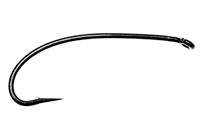
SL6 Black Spey Hooks
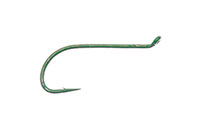
DU3 Limerick Spinner Hooks
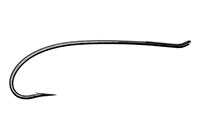
SL4 Single Bartleet Hooks
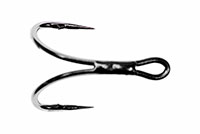
XD1 Tube Fly Double Hooks
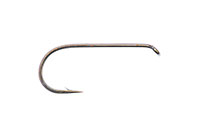
DD2 Flat Perfect Hooks
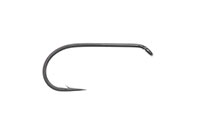
DD1 Black Terrestrial Hooks
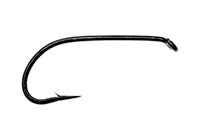
TD4 Old Limerick Wet Hooks
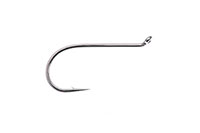
DU1 Silver May Hooks
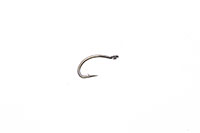
MU1 Flat Midge Hooks
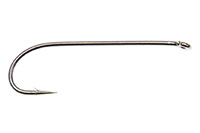
LD3 Long Limerick Hooks
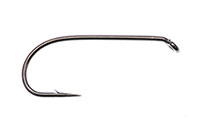
TD2 Summer Sproat Hooks
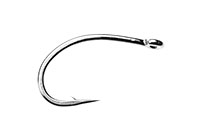
XS1 Tube Single Silver Hooks
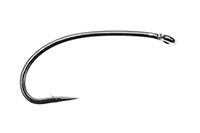
TD6 Siver Sedge Hooks

SL5 Black Spey Hooks

DU3 Limerick Spinner Hooks
- TROPHY CLUB
- FLY SHOW
- EXHIBITION
- MASTERS`
- FLY DRESSING CONTEST Archives
- TRAVELLER Archives
- TACKLE IMPRESSIONS Archives
- ANGLERS` PHOTO GALLERY Archives
- ----------------------------------------------
- トロフィークラブ
- フライショー
- エキシビション
- マスターズ
- フライドレッシング・コンテスト・アーカイヴ
- トラヴェラー・アーカイヴ
- タックル・インプレッション・アーカイヴ
- アングラーズ・フォトギャラリー・アーカイヴ
株式会社サワダ 185-0021 東京都国分寺市南町3-13-4
SAWADA'S INC. 3-13-4 Minamicho, Kokubunji, Tokyo 185-0021, Japan
写真・ドキュメントの無断転載を禁じます。
All the images and documents found on this site are owned by Ken Sawada and may not be used without permission.
But, link to this site is FREE.
Copyright © 2000 - 2024 SAWADA'S INC.. All rights reserved.
SAWADA'S INC. 3-13-4 Minamicho, Kokubunji, Tokyo 185-0021, Japan
写真・ドキュメントの無断転載を禁じます。
All the images and documents found on this site are owned by Ken Sawada and may not be used without permission.
But, link to this site is FREE.
Copyright © 2000 - 2024 SAWADA'S INC.. All rights reserved.
